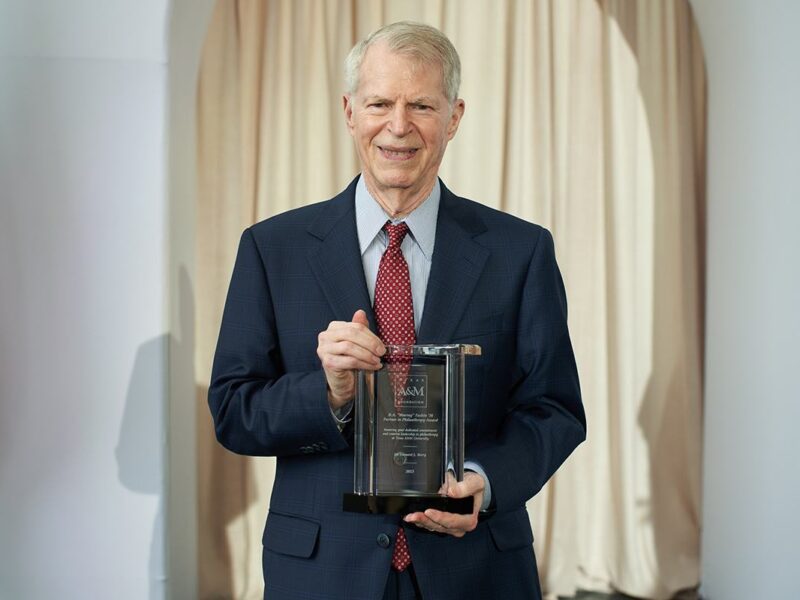Renovated Memorial Student Center A Campus Model For Sustainability

When the renovated Memorial Student Center reopens next week, it will become one of several facilities on the Texas A&M campus built with sustainability in mind. From the limestone of the walls to the paper goods in the dining spaces, the MSC — which was built according to LEED, or Leadership in Energy and Environmental Design, Silver standards — embraces environmentally friendly operations.
The high volume of people who are served by the MSC makes it a critical campus model for sustainability, said Kelly Wellman, Texas A&M’s sustainability officer.
“The MSC plays a tremendous role in our campus culture — whether as the ‘living room’ of campus, home to numerous student organizations, active events center or destination for campus visitors — the design and functionality of the MSC embodies the Aggie Spirit while looking to the future,” she added.
The three-year-long design and construction process of the MSC is one that is based on sustainable principles, said Bill Cox, assistant director of the University Center Complex.
In fact, Cox continued, 68 percent of the building’s existing material was repurposed and reused in the renovation. For example, maroon bricks line the outside walkways of the building — the same bricks that were once in Rudder Plaza.
The MSC also utilized local building materials, another sustainable construction practice that happened to also incorporate the history and tradition associated with the student center, Cox added.
“On the outside of the original MSC, there was a beautiful limestone that came from a Texas quarry,” he said. “We were able to actually track down this quarry, which is still in business, and purchase the same limestone for the renovation.”
The sustainability of the MSC will extend beyond its construction practice — it will be ingrained in the everyday, routine functions of the facility, Cox said.
While full of natural lighting, the MSC is also outfitted with occupancy sensors, meaning the lighting, heating and cooling systems will automatically adjust themselves if people enter into a room. The event management software that students, faculty and staff use to book events is linked to this same operating system. This means that when a student group arrives at their designated meeting room at 7 p.m., the room is already cooled — or heated — and the appropriate audiovisual equipment is turned on and ready to go, all without the assistance of an MSC staff member.
Additionally, all of the items, including cups, utensils, and plates, used by Dining Services in the MSC’s dining facilities are either recyclable or compostable, meaning that the materials collected by Brazos Valley Recycling are immediately given back to the earth in agricultural uses.
The building may have been constructed to be as environmentally friendly as possible, but there are still simple actions students can take every day to maximize the sustainability of the new MSC once it reopens, Cox said.

“There are little things, easy things, like putting waste in its appropriate container,” he said. “If students are buying food and eating in the building, every item they purchase is compostable. There are also electrical outlets everywhere for the students’ convenience, but when the laptop or phone is charged, just remember to unplug the charger.”
The variety of sustainable design features in the MSC are a demonstration of how Texas A&M incorporates sustainability into its everyday life, Wellman said.
“We are all called upon to be good stewards of our resources whether those resources are economic, environmental or social,” she continued. “As an institution teaching the leaders of tomorrow, we must continually model stewardship through actions, teaching and infusing the Aggie Core Values into everyday life.”
Media contact: tamunews@tamu.edu.





